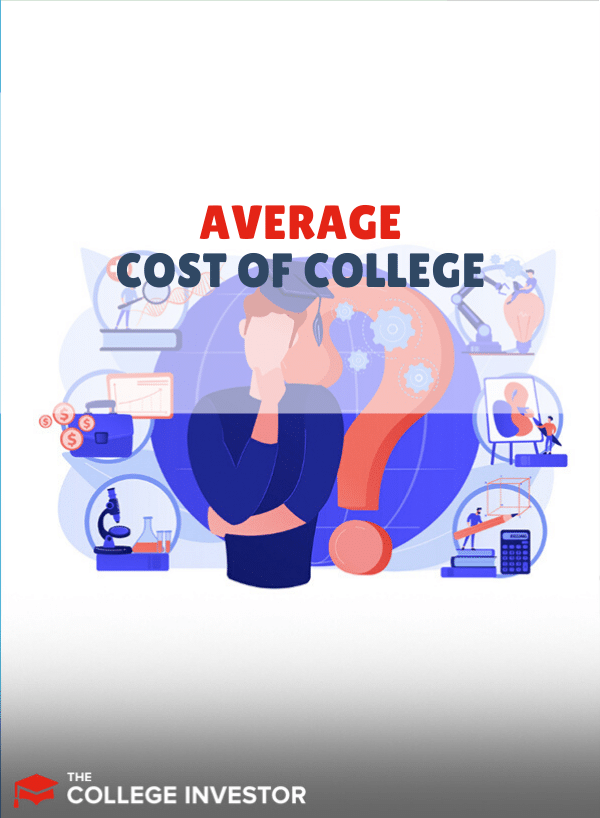
How much will college cost for students aiming to enter in the fall of 2022?
If you’re a millennial or Gen Zer, you might have heard people in their 50s and 60s talking about working their way through college and graduating with little debt. Today, that seems impossible. And that has contributed to students graduating with an average of $30,000 in student loan debt.
How much does college cost today? Is it worth it to pay that much for a college degree? Well, we have the data through 2019 (the most recent available), so let's break it down.
In today’s post, we’ll talk about the average cost of a college education over time and how you can get the most for your money as you research and decide on which colleges to attend.
The Average Cost of College Since 1985
The National Center for Education Statistics, a section of the United States Department of Education, has gathered information on average tuition costs for years.
In 2021, they released data that showed that since 1985, tuition for both two-year colleges and four-year colleges had increased by more than four times by the 2018-19 academic year — whether the institution was public or private.
Here’s a summary of what those numbers look like. Note: All these numbers are adjusted for inflation to reflect 2018-19 dollars. The numbers we’ll discuss below were calculated to include tuition, fees, as well as room and board.
During the 1985-86 academic year, the average total cost for a college education regardless of whether it was a private or public institution was:
- All institutions: $4,885
- Four-year colleges: $5,504
- Two-year colleges: $3,367
By the 2018-19 academic year, this is what the average cost of a college education per year was:
- All institutions: $24,623
- Four-year colleges: $28,123
- Two-year colleges: $11,389
These numbers were then separated to reflect the average cost at a public institution versus a private institution.
For public colleges, this is what the numbers looked like in 1985:
- All institutions: $3,571
- Four-year colleges: $3,859
- Two-year colleges: $2,981
By 2019, those numbers had increased to $18,383, $20,598, and $10,950, respectively.
For private colleges, the average costs in 1985 are shown below:
- All institutions: $8,885
- Four-year colleges: $9,228
- Two-year colleges: $6,512
And by 2019, those numbers had increased to $44,306, $44,662, and $28,627, respectively.
These costs don’t factor in what students might spend on books, food, and other associated costs of attending college.
Thinking About the Average Cost of College Over the Last 30 Years
A quick analysis of these numbers show that over the last 30+ years, the cost of going to college has increased by 400% to 500% — regardless of whether the institution was public, private, a four-year college, or a two-year college.
What does it mean? Well, it could mean that college costs will continue to go up over the coming years — for various complex economic reasons.
If the federal or state governments don’t make decisions about how to make college affordable, those skyrocketing costs could mean students will graduate from college with even higher student loan debt than we have now.
For aspiring college students (and parents who may pay for college), this can certainly sound distressing.
If you’d like to reduce college costs, here are some ideas you could consider:
- Consider all your options when you decide to pursue a college education. If you want to go directly into a profession like medicine, nursing, or dentistry after school, then it might make sense to opt for a four-year college knowing that you will be going into these more specialized professions.
- Two-year public colleges have been historically low-cost. Even with a five-times increase in the cost of education at a two-year public college, the average cost still sits at about $10,000 per year. Some people take the strategy of first attending a two-year college and then transferring to a four-year college to finish up their last two years. This is a viable path as well if you want to reduce costs.
- If you attend a college or university in your home state, generally, the costs are low. Thus, my recommendation is to check out schools in your state that offer the program you want to study before you look outside of your state.
- Even though you may start out as an out-of-state student, some schools allow you to convert to an in-state student after you’re able to prove you’ve lived in a state for a certain period of time. If you’d like to reduce the cost of your college education, you can take this route as well.
- While I’m an advocate for college degrees and graduate degrees that serve your purpose, I also realize that there are high-paying professions out there that don’t require that you have a college degree. You might have to get a certification or attend a vocational school to learn needed skills. However, this route will not cost you thousands of dollars.
- If there are scholarships available to you because you fall into a specific category or group, (e.g., military, military spouse, Native American, etc.), take advantage of those as well.
- Some jobs offer a college tuition incentive as part of their benefits. You can take advantage of that as well.
Closing Thoughts
Unless there’s radical intervention, the cost of college education in the United States will continue to rise. It’s inconvenient, but it’s true.
Taking some of the steps above can help with reducing those costs so you don’t come out of college in over your head with loans to pay back.

Robert Farrington is America’s Millennial Money Expert® and America’s Student Loan Debt Expert™, and the founder of The College Investor, a personal finance site dedicated to helping millennials escape student loan debt to start investing and building wealth for the future. You can learn more about him on the About Page or on his personal site RobertFarrington.com.
He regularly writes about investing, student loan debt, and general personal finance topics geared toward anyone wanting to earn more, get out of debt, and start building wealth for the future.
He has been quoted in major publications, including the New York Times, Wall Street Journal, Washington Post, ABC, NBC, Today, and more. He is also a regular contributor to Forbes.
Editor: Clint Proctor Reviewed by: Chris Muller
